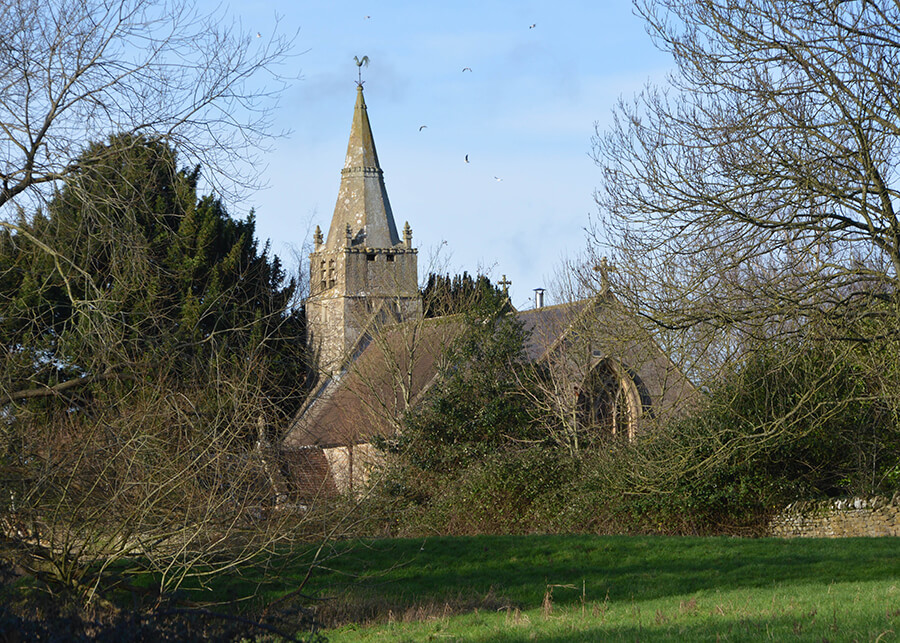Villages and hamlets around Frome include Beckington, Berkley, Buckland Dinham, Chantry, Chapmanslade, Cloford, Coleford, Corsley, Downhead, East & West Cranmore, East & West Woodlands, Great Elm, Hapsford, Holcombe, Laverton, Leigh on Mendip, Lullington, Marston Bigot, Mells, Nunney, Norton St Philip, Old Ford, Orchardleigh, Rodden, Rode (Road), Standerwick, Stoke St Michael, Trudoxhill, Tytherington, Vallis, Vobster, Wanstrow, Whatley, Witham Friary and Woolverton.
The following parish extracts, in alphabetical order, are mostly taken from the 1914 Kellys Directory of Somerset, plus some updated information.
Beckington
Beckington is a parish and village, on the high road from Frome to Bath, in the Frome division of the county, Frome hundred, archdeaconry of Wells and diocese of Bath and Wells. The church of St. George is an ancient building of stone in the Transition style, consisting of chancel, nave of four bays, aisles, a side chapel formerly belonging to the Sheppard and Kelson families. The register dates from the year 1559 and contains an entry to the effect that Charles II passed through here after the battle of Worcester, Sept. 3rd 1651. This place, formerly celebrated for its manufacture of cloth, was the birthplace, about 1385, of Thomas de Beckington, bishop of Bath and Wells 1443-1465. Seymour’s Court, about half a mile east, and now a country house bed and breakfast, was once the seat of Sir Thomas Seymour, Baron Seymour of Sudeley, who married Queen Catherine Parr, widow of Henry VIII. The land is in pasture for dairy purposes.
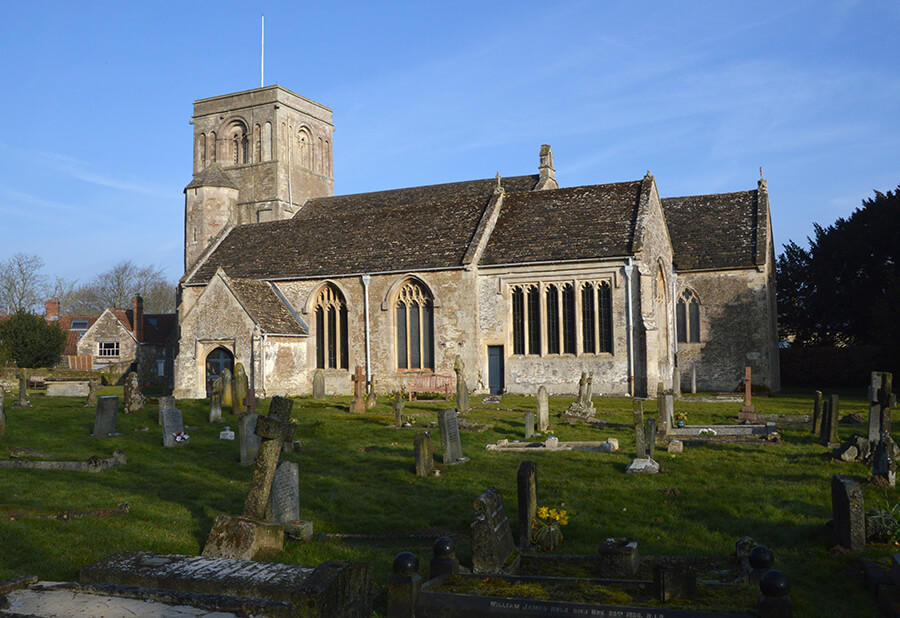
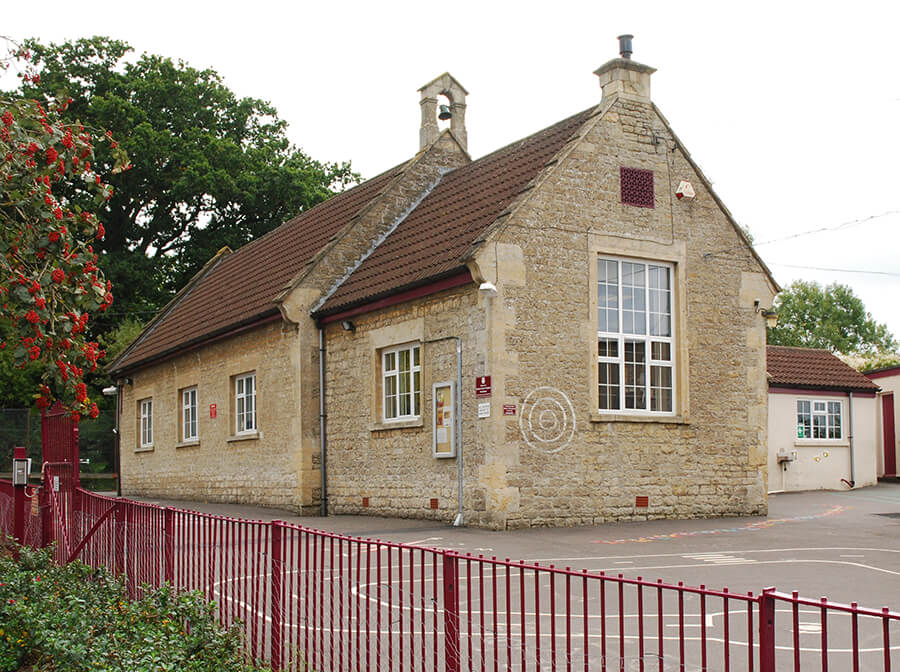
Berkley
Berkley is a parish and small village, 2.5 miles north-east from Frome. The church of St. Mary, rebuilt in 1751, is an edifice of stone in the Italian style. The register dates from the year 1547. The land is chiefly in pasturage for dairy purposes. By Local Government Board Order 16,087, March 25, 1885, a detached part of Standerwick was added to this, parish, and Staplemead amalgamated with this parish from Laverton, while detached parts of Berkley were transferred to Frome and Beckington.
Buckland Dinham
Buckland Dinham is a small parish, watered by a tributary of the river Vallis, which, gliding on by Orchardleigh, falls into the river Frome, and is 3 miles north-west from Frome in the Frome division of the county. The church of St. Mary the Virgin is a building of stone, in the Norman and Early English styles. The register dates from the year 1569. In this parish, on high ground, near the entrance to Orchardleigh, are two huge oblong stones, and a smaller one lying close by; around them is a semicircular mound; these were formerly considered Druidical, but it is now conjectured by some archaeologist that they commemorate some great victory. This place was formerly a market town and of considerable importance, a charter having been granted in the twenty-fourth year of the reign of Henry III for holding a weekly market on Tuesday and a fair on the eve, day and morrow of St. Michael, Oct. 9, 10 and 11, but it is now extinct. For many years, when the manufacture of cloth was the staple trade of this and the surrounding neighbourhood, this parish was noted for the growth of teazels. Nearly the whole of the land is in pasture.

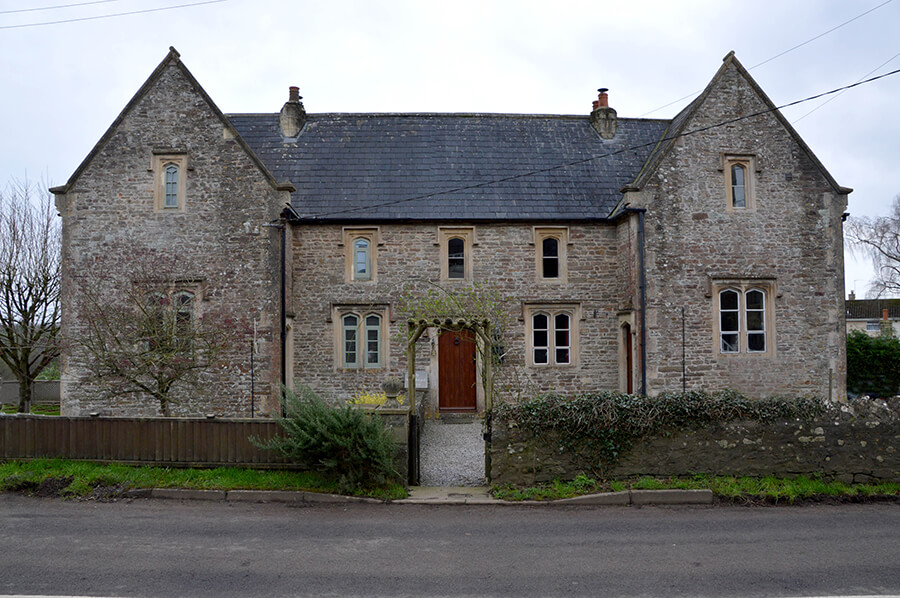
Chantry
Chantry is an ecclesiastical parish, formed in 1846 out of the civil parishes of Whatley, Elm and Mells, 4.5 miles south-west from Frome. The church of the Holy Trinity, consecrated in 1846, is a building of stone in the Decorated Gothic style and the register dates from the year 1846. The Chantry is a building in the Italian style, dating from about 1830: it is situated in about 38 acres of park and garden land and commands extensive views; in the grounds is an artificial lake about eight acres in extent. This photo is of the Village School built in 1849 but now a private dwelling.
Cloford
In the parish of Cloford, a spring rises, called Holy-Well, or Holwell, from which a brook runs through Nunney, on its way to Whatley, Elm and Bradford Bridge, where it joins the river Frome. This stream has a bridge of three arches over it in the street of Nunney village, through which it runs. The church of The Blessed Virgin Mary is a building of stone in the Third-Pointed style and the register dates from 1561. The principal part of the land is in pasture for dairy purposes.
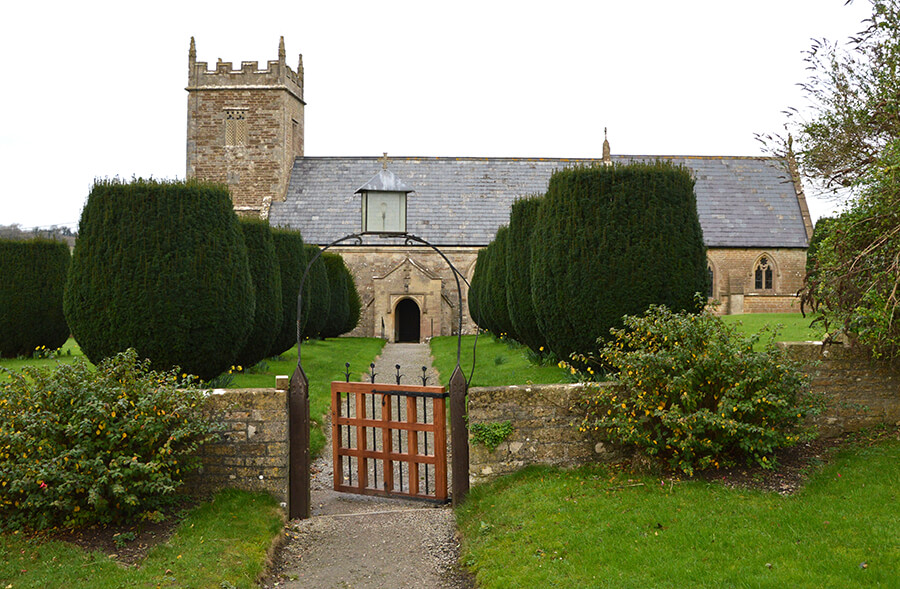
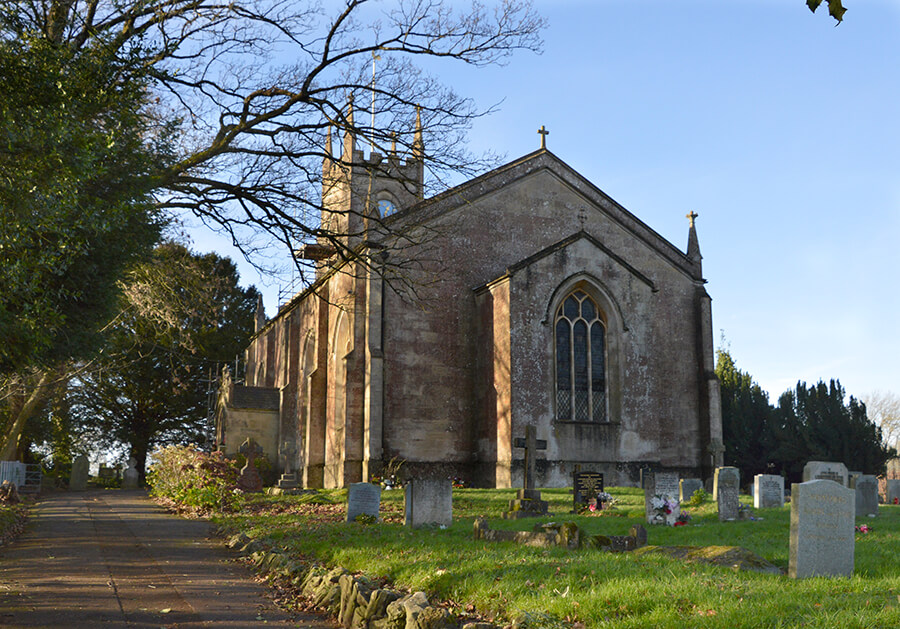
Coleford
Coleford is a hamlet of Kilmersdon, in a fertile agricultural and extensive mining district. The Holy Trinity Church, erected about 1831, is a modern building of stone in the Early English style and the register dates from the year 1831. There are Wesleyan and Primitive Methodist chapels here as well as a Temperance hall which was erected in 1866. The Coleford Oral History Group have compiled a book of memories of Coleford from 1900 to 1945 which is called Coleford as ’twere.
Cranmore (East & West)
The name Cranmore comes from the Old English Crane Mere meaning ‘cranes/herons pool’ and the pond in the centre of the village still attracts many birds.
East Cranmore is home to the popular East Somerset Railway which runs steam trains for its many visitors. One of the oldest buildings is the Church of St Bartholomew dating from the 15th century. There is also the former Church of St. James, erected on the site of an old Saxon church in 1846 and built of Doulting freestone in the Early English style and the register dates from the year 1655. (This building has been deconsecrated and is now a private dwelling.) On a high hill forming a conspicuous object for many miles around and in this parish, is Cranmore Tower erected in 1862 and now privately owned.
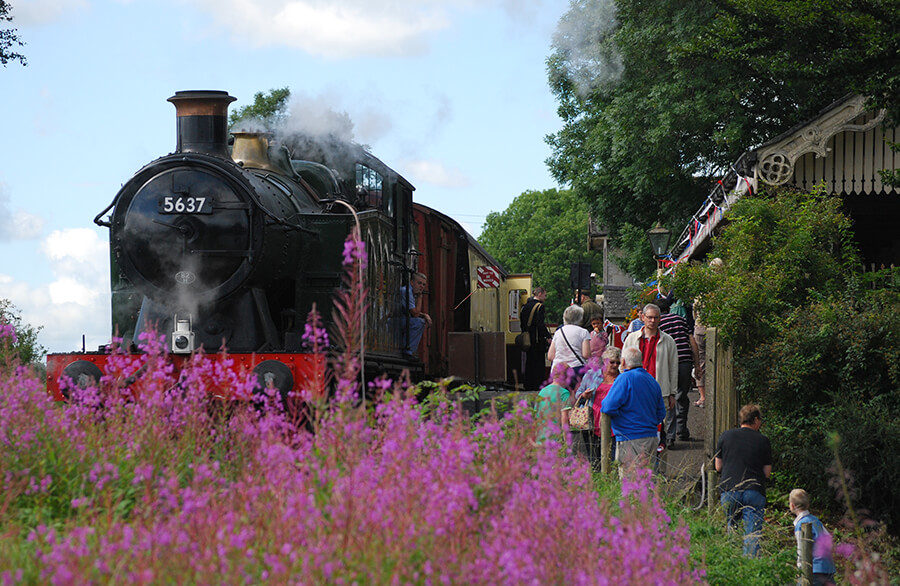
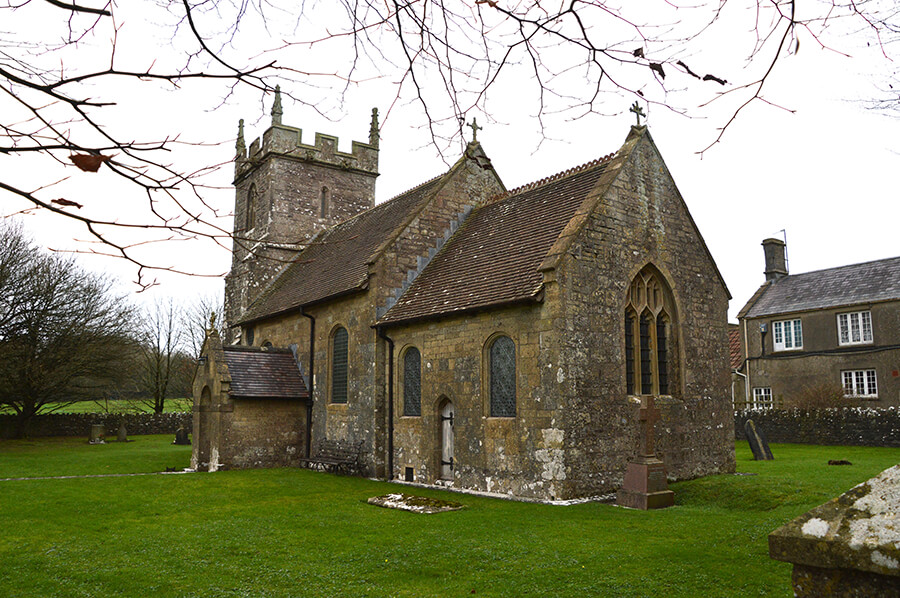
Downhead
Downhead is a small parish and straggling village, near the Frome and Shepton Mallet road, 2.5 miles northeast from Cranmore. The All Saints Chapelry built in 1751, is a building of stone of the Perpendicular period and the register dates from the year 1695. Also there is a Primitive Methodist chapel, erected in 1863.
Elm
Elm, now known as Great Elm, is a small parish 3 miles north-west of Frome. It is pleasantly situated on the edge of a woody vale, a stream running through the valley and by its side the winding road to Mells; the locality is rich in beautiful and romantic scenery and the rocks rising to a height of 150 feet are overgrown with coppice and pendent ivy and bear evident marks of having been torn from the opposite side of the valley by some violent convulsion of nature: the projecting rocks on the one side seem to answer to the indentations on the other. To the south-west of the village are the remains of a Roman encampment. The church of St. Mary Magdalene is an ancient building of stone, in the Early English style and the register dates from the year 1697.
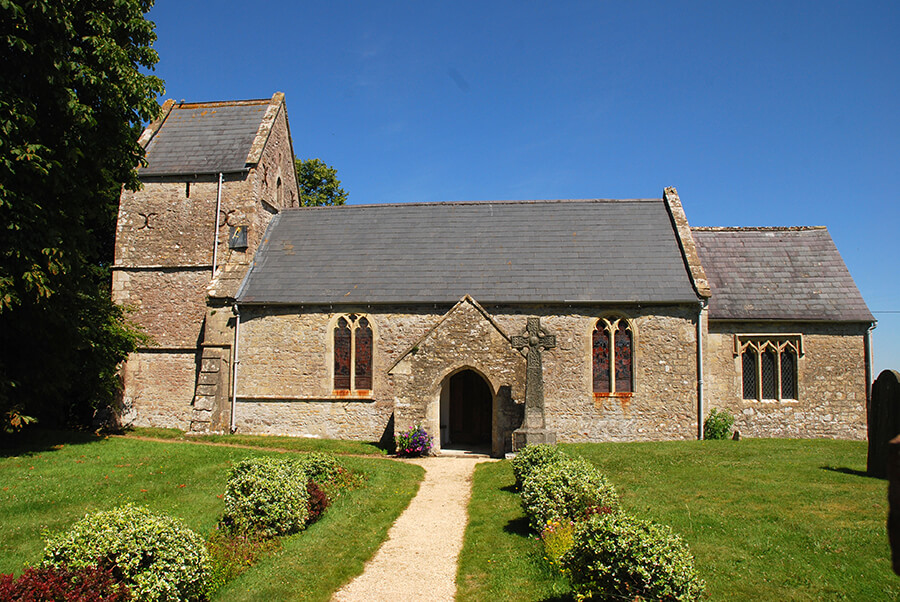
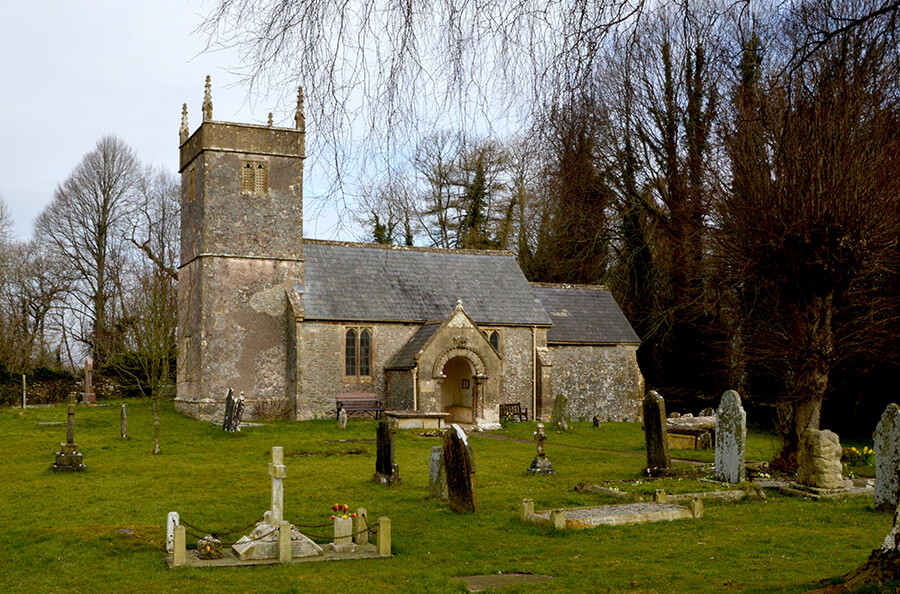
Holcombe
Holcombe is a parish and village 7.5 miles west of Frome, in the Frome division of the county. The old church of St. Andrew, situated about one mile north of the village, is an ancient building of stone in the Perpendicular style with a Norman doorway. The new church of St. Andrew, situated in the centre of the village, erected in 1884-5 and consecrated July 18th 1885, is a building of stone in the Early English style. The register dates from the year 1698. The Wesleyan chapel, originally built in 1774, but rebuilt in 1893, is an edifice of stone in the Gothic style. The village had an extensive brewery, established in 1800 and worked by the Holcombe Brewery Company but closed in 1951. Coal abounds and there are the remains of many old works, discontinued for want of the necessary draining machinery and a new mine was commenced at Edford Green in January 1862 closing in 1915. The site was taken over by a stone and concrete works. The village history group published The History of Holcombe in 2013.
Laverton
Laverton is a parish and village, 1 mile west from the Frome and Bath road, 4.5 miles north from Frome station in the Frome division of the county. The church of the Blessed Virgin Mary is a small building of stone in the Gothic style of the 13th century. The register dates from the year 1693.
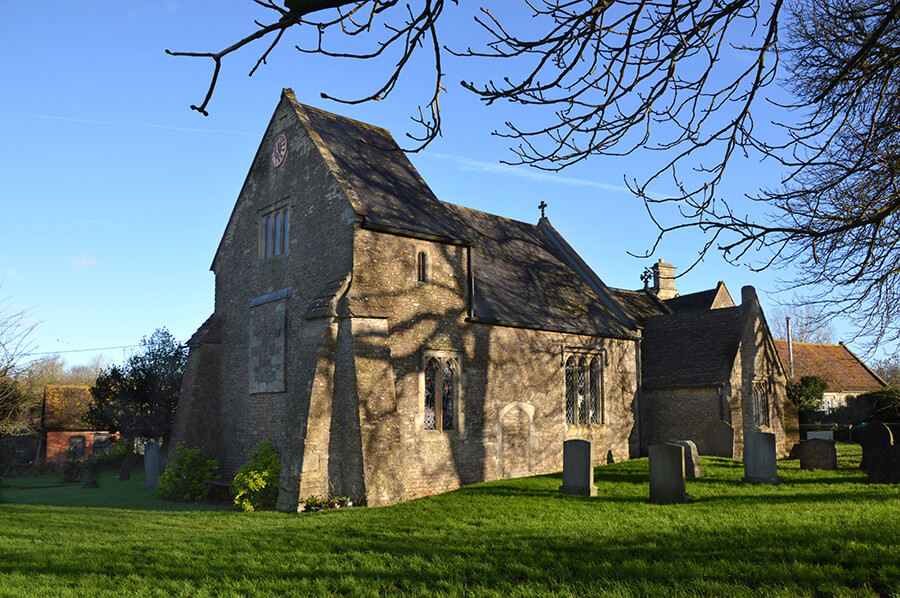

Leigh-upon-Mendip
Leigh-upon-Mendip is a parish and village 3.5 miles north-east from Cranmore and 6 miles east-north-east from Shepton Mallet, in the Frome division of the county. The parish, situated 884 feet above the level of the sea, is considered very healthy and is well supplied with excellent water from two springs in fields adjoining the village. The church of St. Giles is an ancient building of stone in the Perpendicular style, including an embattled western tower containing a clock and 6 bells: the tower, elaborately decorated, belongs to the period of Henry VII. The register dates from the year 1566. There are also Wesleyan and Primitive Methodist chapels in the village. Joyce Jefferson has written The Book Of Leigh upon Mendip.
Lullington
Lullington is a village and civil parish just across the Mells River from Beckington and 2.5 miles north east of Frome. Before the Norman Conquest the estate belonged to King Harold, later passing to Longleat Priory and after the Dissolution of the Monasteries was acquired by the Thynne family. It was sold in the early 19th century by the Marquess of Bath and bought by William Duckworth, who rebuilt the village. The parish Church of All Saints dates from the 12th century.
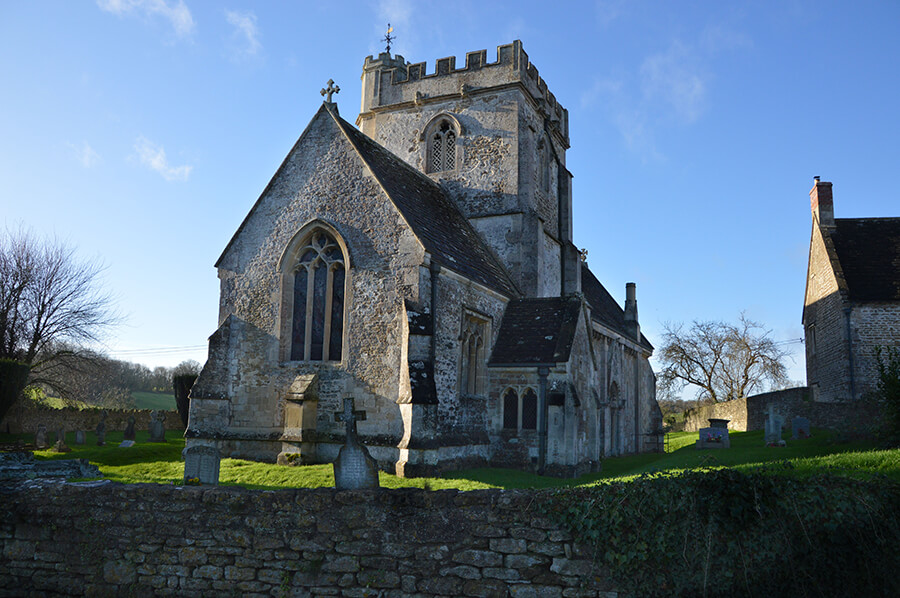
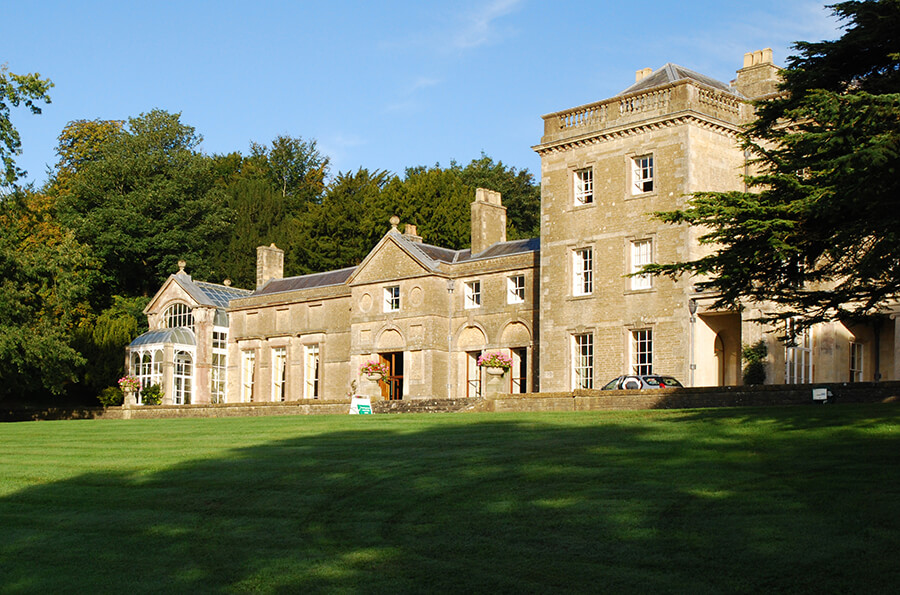
Marston Bigot
Marston Bigot, originally spelt Biggott, is a parish and village, 3 miles south-west from Frome in the Frome division of the county. The parish is supplied with water from Nunney. The church of St. Leonard, situated close to Marston House and rebuilt on the site of the ancient church in 1789, is a small building of stone in the Norman style. The register dates from the year 1680. Marston House, originally the mansion of the Earl of Cork and Orrery P.C., K.P. lord lieutenant of the county, has been almost entirely rebuilt since the accession of the present earl in 1857, and is a fine structure in the Italian style, within a well-wooded park of about 400 acres on the slope of a hill, facing the south-east, overlooking a fine vale of pasture land, in which there is an artificial lake of about 20 acres.
Mells
Mells is a parish and large village, in a valley and on a stream taking its rise in Emborrow pond on Mendip Hill, joining the Frome river and is 3.5 miles west from Frome in the Frome division of the county. The church of St. Andrew is a building of stone in the Perpendicular style, erected about the middle of the 15th century and the register dates from the year 1567. Lime burning was extensively carried out and in the parish are the remains of several camps. Mells Park, the seat of the ancient family of Horner, is delightfully seated near the village: it is well-wooded and covers an area of about 300 acres. The nursery rhyme Little Jack Horner originated in Mells Park. The book A History of Mells was written by Rev. J.W. Clevendon and more recently the Mells Millennium Book was written by Jan Seewooruttun.
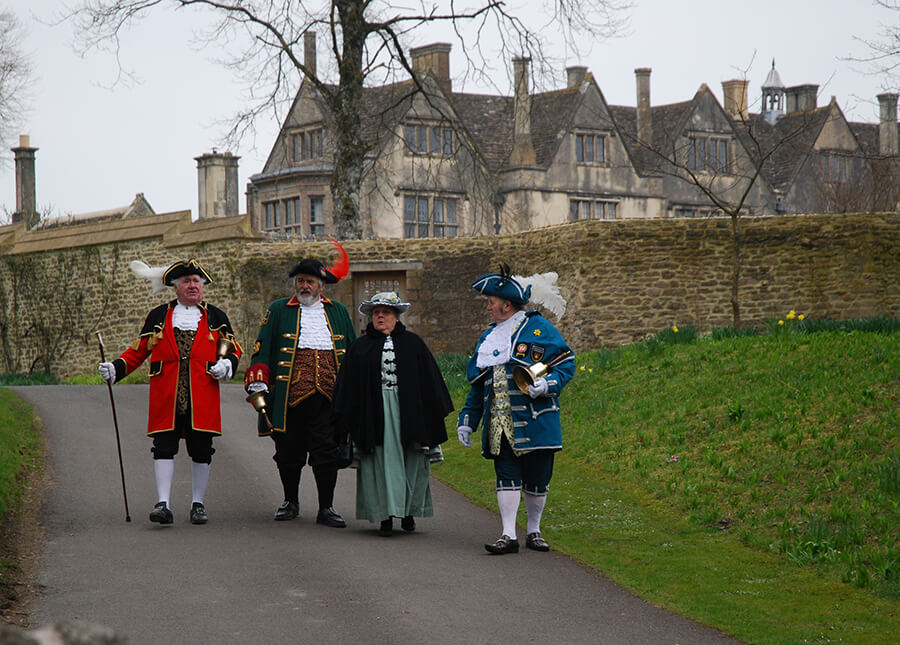
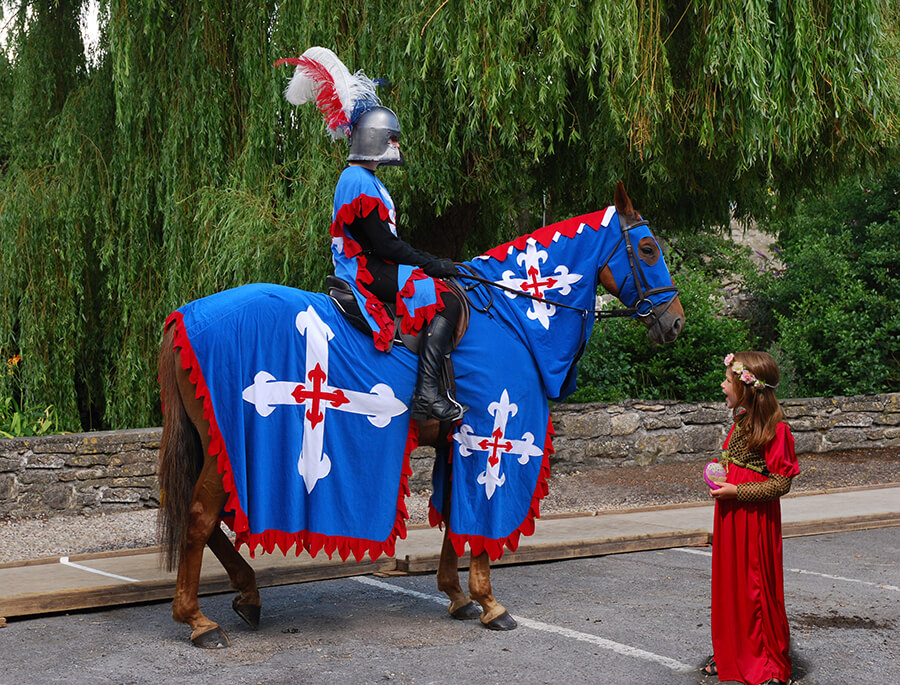
Nunney
Nunney is a parish and village, on a small stream that joins the river Frome, 3.5 miles west-south-west from Frome in the Frome division of the county and is remarkable for the ruins of a strong castle, the shell of which remains nearly perfect and is a very fine piece of antiquity. In April 1873, a mine of iron ore was opened at Nunney and worked by the Furzeham Iron Ore Company; this has since been closed. The remains of a Roman tessellated pavement, in good preservation, were discovered some years ago on the property of J. H. Shore of Whatley House: there are also the remains of a Roman encampment near the village. The church of All Saints is an ancient building of stone in the Early English style and the register dates from the year 1548. Nunney is well known for holding an annual street fayre. The book The History of Nunney is written by Anthony Windrum.
Orchardleigh
Orchardleigh is a parish partly bounded by the Frome River 2 miles north of Frome. The church, St Mary’s, stands on an island in a lake, in the park, and is a small edifice of stone in the Early English style. Orchardleigh Park, once the property of the Champneys family who were in possession for about three centuries, became the seat of the Rev. William Arthur Duckworth M.A., J.P. lord of the manor and sole landowner. The mansion occupies an elevated position in the centre of an undulating park of about 800 acres, which comprises nearly the whole of Orchardleigh parish and is a building of stately appearance in the Elizabethan style, erected by the late William Duckworth and commands fine views of the surrounding country, including Cley Hill, the Wiltshire downs and the surrounding woodland scenery. The park (now partly a golf course) is adorned with numerous groups of forest trees, and contains a lake of 24 acres and two ponds; the carriage drive through the grounds, from one lodge gate to the other, is 2.5 miles in length.
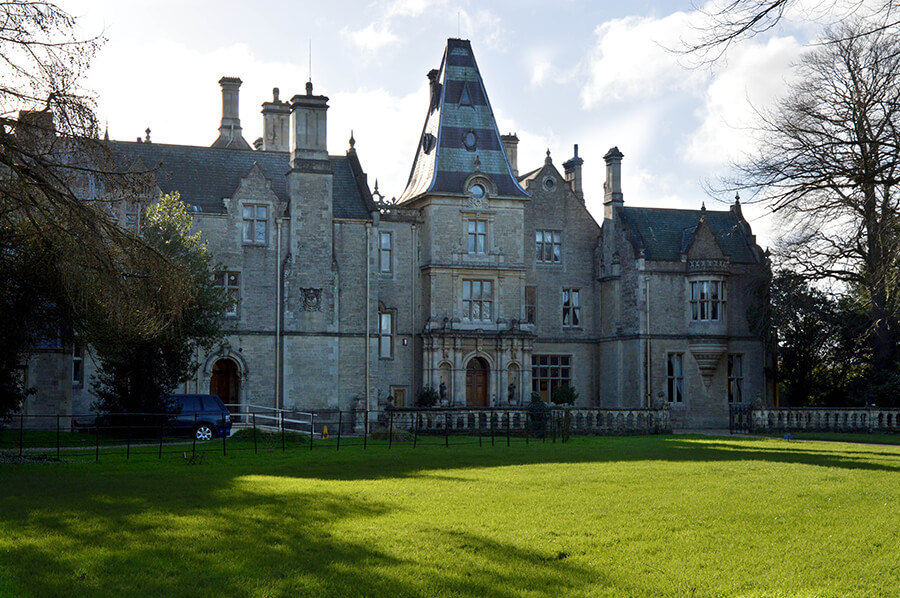

Rodden
Rodden is a parish, on the Warminster road, 1.5 miles from Frome in the Frome division of the county. All Saints church is an ancient building of stone in the Early English style, dating from 1640 and the register dates from about the year 1654. Under the provisions of the “Divided Parishes Act, 1882” (45 and 46 Vict. c. 58), a detached part of this parish known as Old Ford was amalgamated with Berkley, and a detached part of Rodden has been transferred to Frome for civil purposes.
Rode
Rode, formerly spelt Road, formerly a market town, is a parish and extensive village on the river Frome which runs through it and the neighbouring parish of Woolverton. It is situated 4 miles north-east-by-north from Frome in the Frome division of the county. The parish church of St. Lawrence is a fine building of stone with an embattled tower containing 6 bells. At one corner of the tower is a railed battlement, called “the Kings Chair” and a tradition in the parish is that Charles II after the battle of Worcester (Sept. 3, 1651) ascended this tower for the purpose of reconnoitring the surrounding country. The register dates from the year 1587. In 2015 a new book called Discover Rode’s Past by Peter Harris was published. Peter Harris has produced a website that solely provides information relating to the history of the village of Rode. It contains all of the records collected over a period of 20 years, from a wide range of sources. These records take many forms, from copies or transcriptions of original old documents and copies of old images, to Peter Harris’ own summaries of the history of village buildings and local families. The records have been grouped into the eleven categories listed at the top of each page, and these are further sub-divided as necessary.
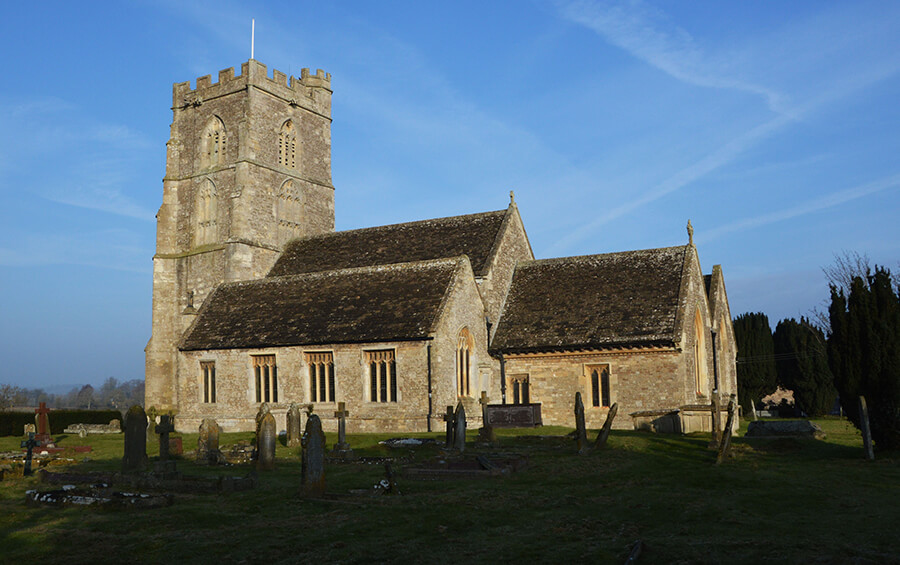

Standerwick
Standerwick is a village, 4 miles east-north-east from Frome railway station and on the road to Bath from Warminster. This parish, on March 25th 1885, was, under the provisions of the “Divided Parishes Act 1882” by Local Government Board Order 16,087, divided for civil purposes between Beckington, Berkley and Frome. Frome cattle market was moved from the Market Yard in Frome to Standerwick in the 1980’s.
Stoke St.Michael
Stoke St.Michael, otherwise known as Stoke Lane, is a parish and village on the road from Frome to Wells, 3 miles north from Cranmore in the Frome division of the county. The church of St. Michael, rebuilt in 1838 with the exception of the tower, is a building of stone in the Early English style. The register dates from the year 1644. There are also Wesleyan and Primitive Methodist chapels. Joyce Jefferson has written A History of Stoke St. Michael.
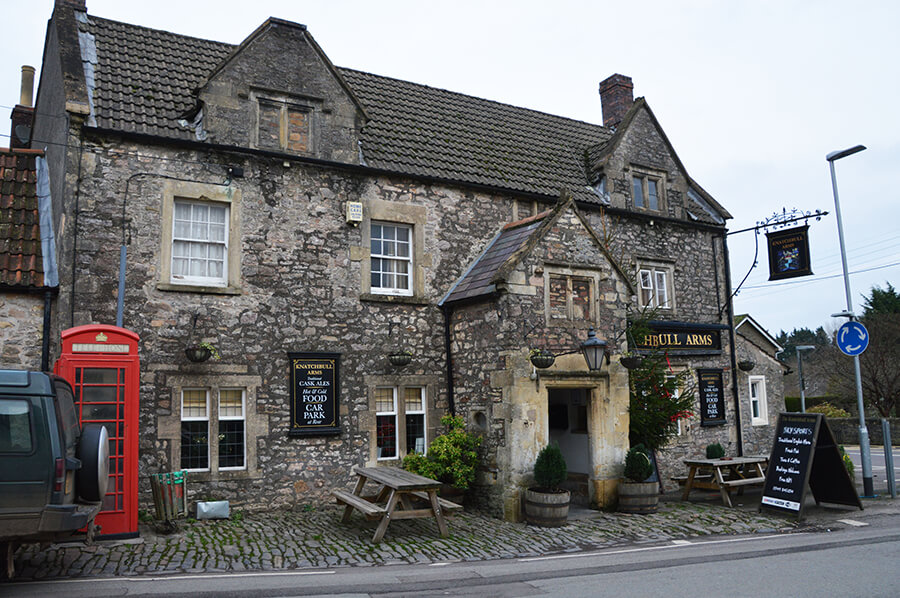

Trudoxhill
In pre-Roman times Trudoxhill inhabitants were probably Belgic Britains who lived in a fortified settlement on Postlebury Hill. Over the centuries the village was involved in the Black Death, building and destroying a castle, executions, the Monmouth Rebellion and much more. The derelict Congregational Chapel, built in 1699, has been completely renovated, allowing services to take place once again.
Wanstrow
Wanstrow is a village on the high road from Bruton to Frome, 6 miles south-west from Frome, in the Frome division of the county. The church of The Blessed Virgin Mary is a building of stone, in the Early English style and the register dates from 1653.
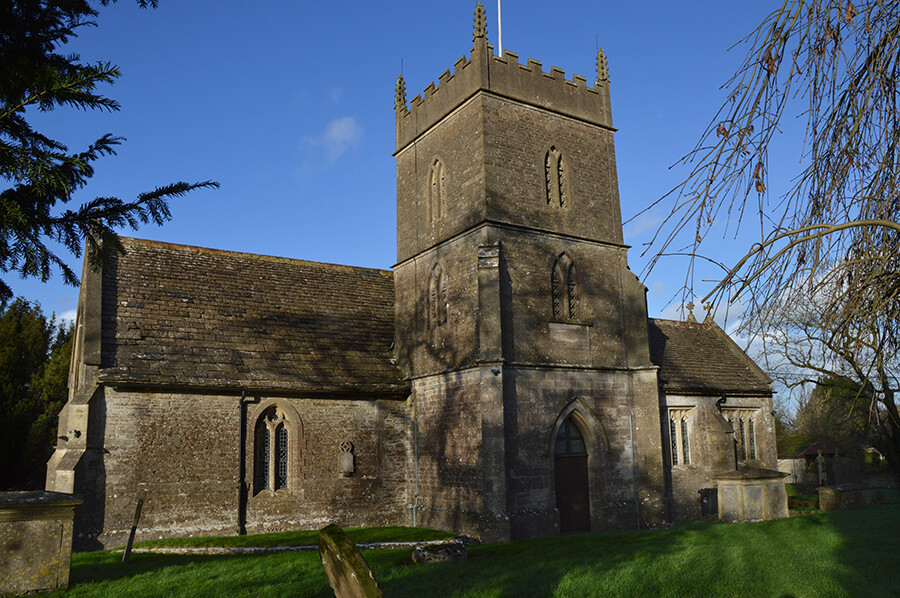
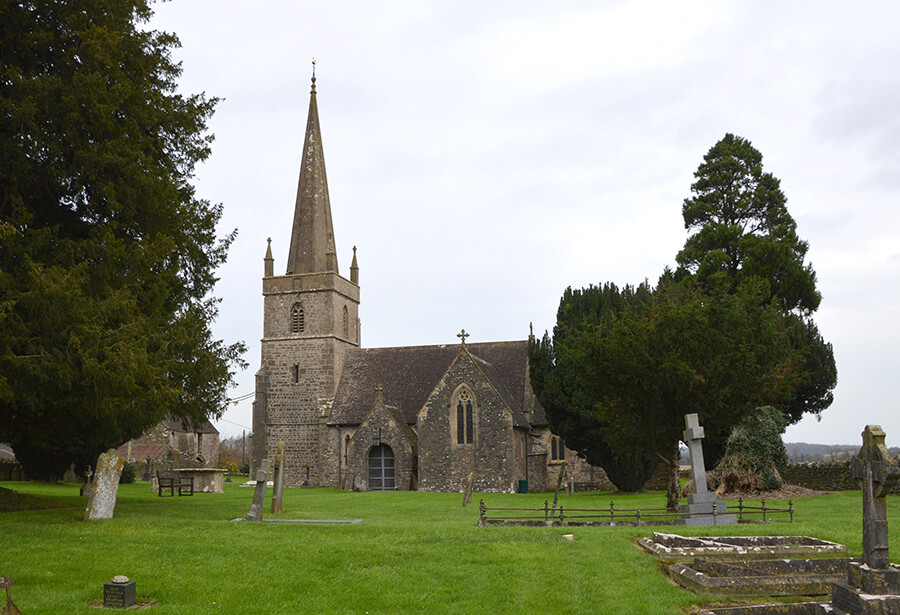
Whatley
Whatley is a parish and village, on the Bath and Wells road, on high ground, in a pleasant dry situation, diversified with hill and dale, 3 miles west from Frome in the Frome division of the county. The church, dedicated to St. George, is an ancient building of stone in the Decorated style and the register dates from the year 1672.
Witham Friary
The village of Witham Friary has an important religious history. In the time of Henry II the first Carthusian Priory was established here in an attempt by Henry to appease the Church for the murder of Thomas A’ Becket. There were nine Monasteries or Charterhouses in England, the first of them built in Witham by Hugh who became the Bishop of Lincoln. Sadly the Priory did not survive the dissolution of the monasteries but the church, originally the lay brothers chapel, continues as the parish church. The thirteenth century dovecote, opposite the church, is also associated with the Priory. This building was once used as a village reading room and the village lock up. In 1903 the original use became apparent after the Duke of Somerset commissioned a restoration of the building and more than 1000 pigeon holes were discovered. The church is a grade one listed building.
In 1856 the coming of the railway to Witham changed the isolated parish for ever. Not only would the residents be able to travel to nearby Bruton and Frome but there was an influx of new people and jobs working on the line and at the station. The station closed in 1966, when it became a victim of the Beeching axe.
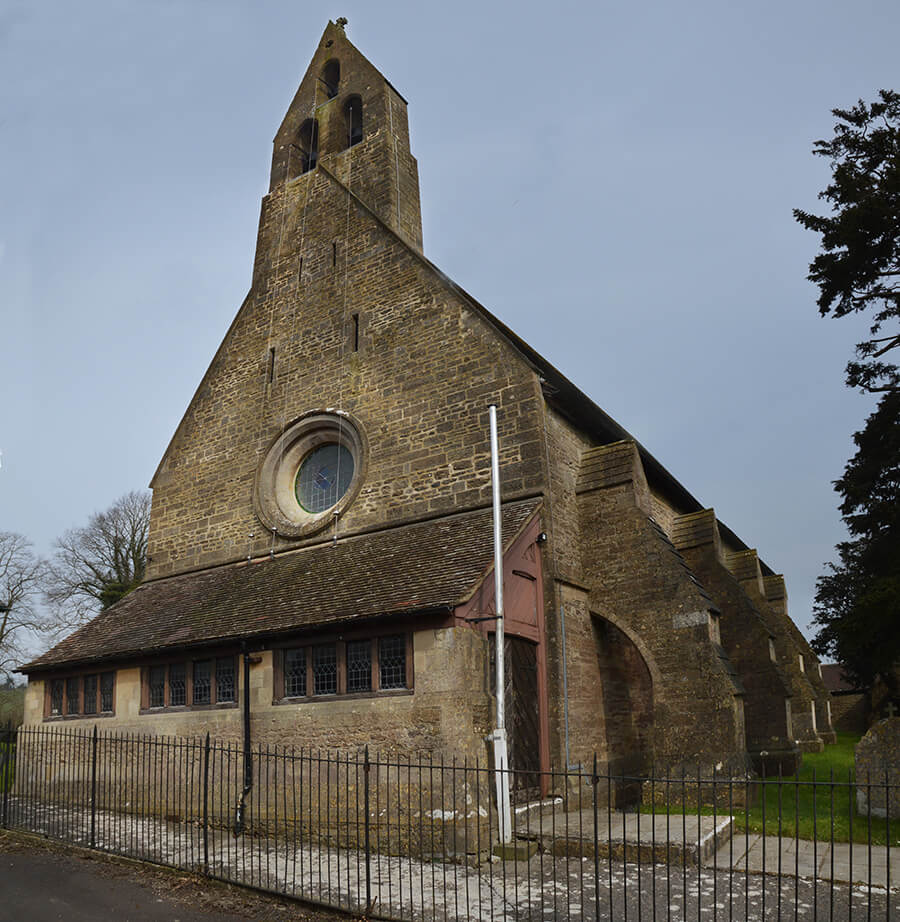
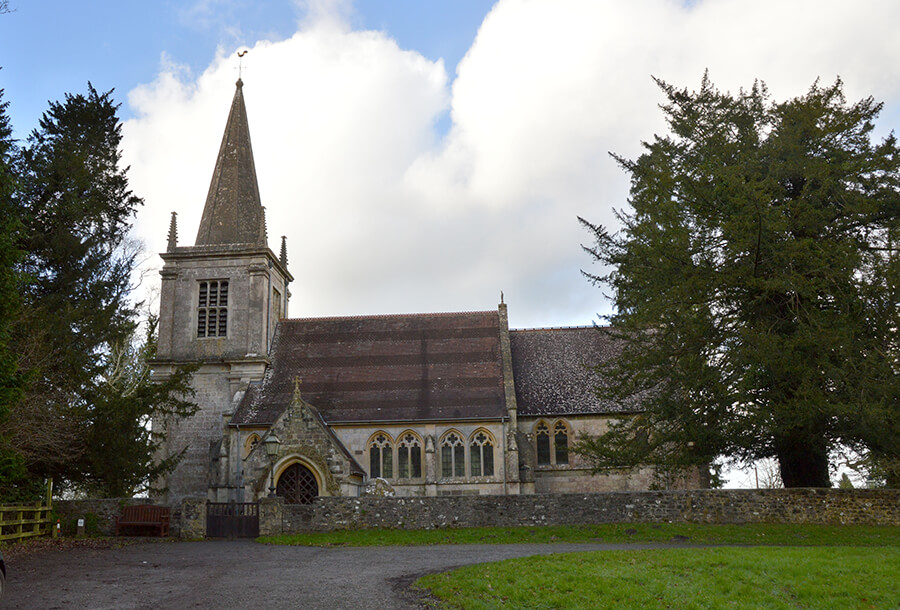
Woodlands (East & West)
Most of this area belonged to the Longleat Estate run by the Thynne family and many estate workers lived in the village. St Katharine’s Church was built between 1711 and 1714 for the benefit of the parishoners. There is a village school (now the village hall) and is famous for hosting “The Woodlanders” music hall productions. The annual Frome Cheese Show, previously held in Frome, has relocated to West Woodlands.
Woolverton
Woolverton is a small parish and village, on the Bath and Warminster Road, on the west of the river Frome, 4 miles north from Frome in the Frome division of the county. The church of St. Lawrence is a small but ancient building of stone in the Tudor-Gothic style. The register dates from the year 1570. The church is now a private home.
